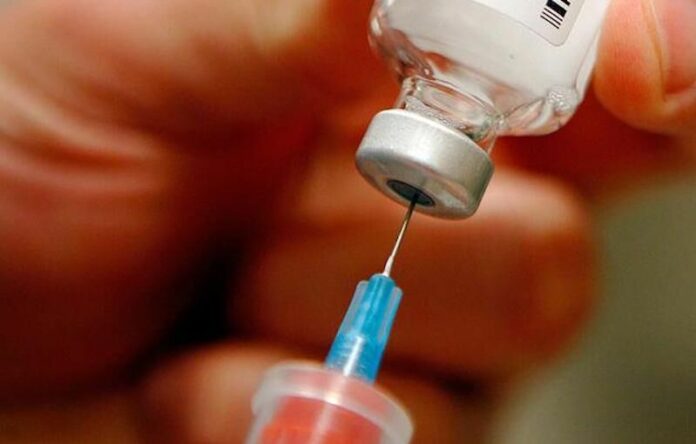As school districts across the county prepare to open their schools for in-person and hybrid learning, the county’s weekly COVID-19 discussion brought together a panel of health officials and teachers and school administrators to discuss school reopenings and the importance of keeping up with health guidelines.
“We’ve learned so much about the importance of in-person education over this past year. Schools and teachers, parents and students have figured out how to make remote learning work during very, very challenging times,” said Lynda Hopkins, chair of the Sonoma County Board of Supervisors. “But remote learning has also reminded us of the limitations of technology and of the magic that occurs in our classrooms every day when they’re filled with students and our dedicated and talented teachers. We are social creatures and being together in school is crucial developmentally for children.”
The March 17 COVID-19 briefing held by the county was a round-table with educators and superintendents from both Santa Rosa City Schools and the Cotati-Rohnert Park Unified School District, as well as Steve Herrington, superintendent of schools for the Sonoma County Office of Education (SCOE).
While the county moved into the red tier of the state’s Blueprint for a Safer Economy tiered system on Sunday, it was largely due to the state shifting the case rates associated with the tier, since it’s distributed over 2 million vaccines.
As of March 17, the county’s adjusted case rate per 100,000 people is 6.4.
Herrington said that by around March 25, SCOE will be closing its vaccination clinic because it’s in its last call for educators to get vaccinated.
“That puts us in a very good position for reopening schools,” he said. “We’ve ensured the safety of our teachers and our faculty and our school staff.”
At the high point of the clinic, it administered about 800 vaccinations per day, he said.
While SCOE’s clinic has helped vaccinate educators across the county, some school districts like Cloverdale and Healdsburg, received vaccines from their local health care providers.
While students, teachers and districts are largely happy to welcome students back to partial in-person learning, Herrington noted that it’s been a rocky road to get here.
“The state changes rules on us often and we have to then rewrite plans and amend situations, so we’ve had to facilitate that,” he said, explaining one of the things SCOE has been in charge of doing during the pandemic.
Parameters for opening safely
“We’re in a very different place now — case rates have dropped significantly in our county. Each day more of us receive vaccinations, with educators receiving priority,” said Dr. Urmila Shende, the county’s COVID-19 vaccine chief, adding that the county just needs to receive more doses of the vaccine in order to make more forward progress when it comes to decreasing case rates and reopening different parts of the county. “We’re continuing to learn, but the science and the data tell us that if we’re careful and implement and follow rigorous school safety plans, we can make in-person instruction safer.”
Shende stressed the importance of making sure children and students wear face masks properly, socially distance and wash their hands while at school.
“We know it’s a lot to ask, but it’s critical to the success of reopening our schools. As we know, children under the age of 16 do not have the option of vaccination at this point,” she said.
In order to help encourage students to follow health guidance and discourage older students from socializing with people outside of their individual cohorts, Mayra Perez, superintendent of the Rohnert Park-Cotati Unified School District (CRPUSD), said that CRPUSD is attempting to address possible socialization among high schoolers by limiting the amount of free time that they have between classes.
Dr. Gary Green, an infectious disease specialist with Sutter Health Santa Rosa, said that opening up elementary schools is sensible but stressed infection prevention measures, and said that students in a high school setting are more likely to spread the virus, since students are older and won’t be vaccinated.
“If we look at the science, I think that whoever made the decision to open up an elementary school has done the right thing. We know that the science says children under 10 have fewer receptors in the respiratory epithelium to acquire the virus and transmit the virus. Opening up elementary schools in a very careful way is super sensible and much safer than trying to open up a college campus,” he said.
“By being very careful and mandating masking, social distancing and hygiene and work stations, I think that’s going to be really important and you can do that in a more controlled setting like in an elementary school than you could for example, in a high school,” he continued.
Looking forward, Green said that we’re in a perfect storm, with more states across the country opening up and various virus variants likely traveling worldwide soon.
“I think we’re seeing a time right before Easter and other holidays, it’s Spring Break, where families are going to open their bubbles too wide and we’re going to see more transmission,” Green said, adding that he thinks we’ll likely see a third wave afterward.
“If history tells us anything, in 1918 they did have a third wave — it wasn’t as bad as the second wave, but it mirrored the first wave,” he said.
Anxiety and excitement
Will Lyon, president of the Santa Rosa Teachers Association, spoke to the anxieties and excitement that teachers may feel when coming back to the classroom.
“What you can’t stop teachers from doing is loving their students. You couldn’t write it out in an MOU, you just couldn’t do it,” he said. “As we’re transitioning, we’re reinventing school for the third time in a year and it’s extremely difficult.”
Lyon said that the anxiety for teachers, including both him and his wife who teaches sixth grade, comes with trying to reinvent and re-envision the best way to teach students, “Our number one priority is safety for students — it has to be.”
“That’s been one of the challenges — we want physical, actual ‘don’t get sick’ safety — and we know that our kids are going crazy without being around humans. My own son, a fifth grader, he went three and a half months … without a playdate with other children,” he said. “Multiply that times the 70,000 students that we have. There is a lot of pressure to go in (to the classroom), so our balances are around that safety, the other part is — and this is really important to us, and I think it’s probably really important for every parent in the county to understand and every administrator and every teacher to understand — we are going to dial hard to the left on connection over content.”
“It’s going to be messy, but we’re going to do every single thing that we can to make the most out of the two months that we have,” he said.
When asked how long he anticipates hybrid learning to last, Herrington said that for now, SCOE is working on tackling new sports guidelines and upcoming graduation guidelines.
“We believe, from the education community, that there will be revised guidance for the fall reopening, but we don’t know what that is,” Herrington said, adding that he thinks it may end up being based on the state of vaccinations.
Game changers
Shende said that one of the biggest game-changers will be when we reach herd immunity, as well as when and if people under the age of 16 will be able to get vaccinated.
“I think there are some other strategies that we can use to make successful planning for the future,” Green said. “Vaccines are going to be very important, but also we’re improving our testing capacity. It might be like when people travel and need to be tested first, we might have a graduation ceremony where people need to be tested first before attending, and then if you do that graduation outside and not indoors, you’ve limited the danger of having the virus spread.”
Green said that he doesn’t think we’ll know the end of the pandemic until we reach herd immunity and until we know how effective the vaccines are against new strains of COVID-19.
“I think there’s a lot of good things we’re learning, and there’s a lot of hope in the future … I think this is going to be the hard year and that next year is going to be much, much easier,” Green said.
“It’s going to look different. If anybody’s thinking, on April 1 we go back to pre-COVID teaching and learning, that’s not true. August is a dream, we hope we’re back to pre-COVID teaching and learning, but we have to follow the science,” Lyon said. “We know that coming in right now, we’re taking big risks. We’re not that far away from purple.”
As a parting note, Shende reminded people that symptoms of COVID don’t just involve a fever and that in many cases, younger people might not have symptoms associated with the virus at all.
“They may have just a little bit of a runny nose, just a little bit of a cough and oftentimes no fever, so any change in symptoms is reason to stay home, be cautious, because it’s extremely difficult to diagnose COVID based on symptoms alone,” she said.








